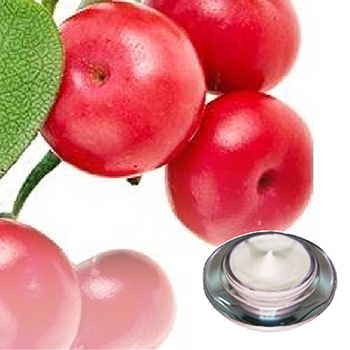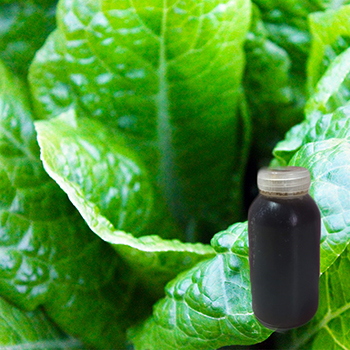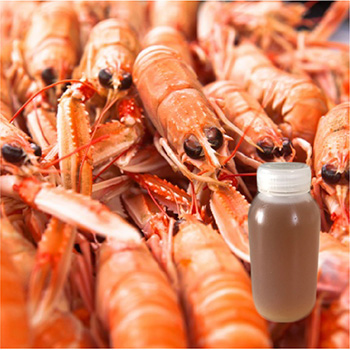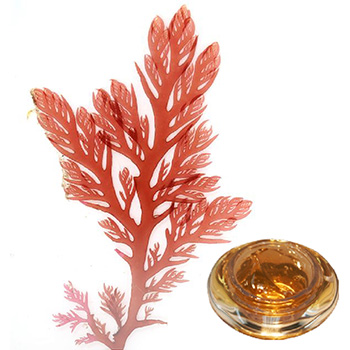目前購物車內沒有商品
Ascorbic acid:
In most animals, the water soluble nutrient, ascorbic acid, is synthesised from glucose. In humans a genetic lesion prevents us from making it and diet is the sole source of this vitamin. As a cofactor for many enzyme systems, ascorbic acid is involved in the synthesis of collagen, carnitine, endocrine hormones, and neurotransmitters. Many of the symptoms of the vitamin C deficiency disease scurvy can be attributed to weakened collagen structures, including bruising, muscle weakness, gum deterioration, and poor wound healing. Ester-C is created by linking ascorbic acid with a mineral such as calcium, potassium, or zinc. This form of vitamin C is non-acidic, which means it is much better absorbed and provides the additional benefits of calcium supplementation. The body does not make vitamin C, so it must be taken in through diet. Benefits of Vitamin C supplementation include immune system support, adrenal function, autism support, collagen formation for healthy skin, and cardiovascular health.
ESTER-C:
The body changes vitamin C into numerous metabolites that may have physiological actions that are different from those of vitamin C itself. And these metabolites - whether manufactured in the body or ingested along with supplemental vitamin C - may influence how the vitamin itself is transported and utilized. The level of these metabolites in the body may not rise significantly, however, until very large doses of vitamin C are ingested. Laboratory studies have shown that suggested the mechanism by which C metabolites, especially threonate, might cause increased blood levels of vitamin C. Dr. Anthony Verlangieri at the University of Mississippi used isolated cells in culture to model how vitamin C is utilized by various body tissues. They observed that exposing cells to calcium threonate increased the uptake of ascorbic acid by these cells.
Ester-C Topical is a liquid concentrate containing patented Ester-C® mineral ascorbates with C metabolites, dissolved in a specially formulated blend of polyglycols. It retains superior stability in oil/water emulsions typical of cosmetic formulations. It is also non-acidic, free of chemical derivatives and effectively penetrates deep down into the skin’s layers to help produce collagen and other support structures.
Ester-C Topical Concentrate Awarded Patent:
Ester-C Topical's unique competitive advantage lies in its stability, pH neutrality, and its ability to penetrate deep down into the skin to help produce collagen and other support structures without the use of chemical esters, such as ascorbyl palmitate or phosphate. By contrast, ordinary vitamin C is acidic and may irritate the skin. Vitamin C is also prone to oxidation and decomposition because it is unstable in water, a component of most cosmetic and skin care products.
A long-awaited breakthrough in the personal care industry, Ester-C Topical has been successfully launched in a growing array of popular skin creams and lotions.Toothpaste makers have also discovered the value of adding stable Ester-C Concentrate to their formulations. line of oral health care products includes an Ester-C toothpaste and mouthwash, and Levlad Laboratories has launched a natural toothpaste with Ester-C Dental Grade Concentrate.
The new patent distinguishes and protects Ester-C Topical Concentrate in several ways: The "liquid compositions" covered by the patent are non-acidic and contain two principal components -- a mineral ascorbate and a pharmacologically acceptable liquid organic polyol solvent. The mineral ascorbate can be any of the compounds that Inter-Cal sells under the Ester-C label, such as calcium ascorbate, zinc ascorbate, etc. The organic polyol solvents are well known and widely used in cosmetics and pharmaceuticals. The patent protects all "liquid compositions" that contain vitamin C metabolites.
Ester-C is a patented, non-acidic form of vitamin C. Ester-C Complex is the most advanced form of vitamin C available. Ester-C® has a neutral pH that helps protect you from the stomach upset that can accompany other vitamin C products.
Ester-C is different from ordinary or buffered vitamin C because it is processed in purified water instead of solvents which makes it a purer form of vitamin C. It contains calcium threonate, making this form of vitamin C four times more bioavailable than other forms of vitamin C.
Vitamin C is an important antioxidant and free radical scavenger. Free radicals are incomplete atoms or molecules that are the natural by-products of everyday metabolic, detoxification, and immune system processes. These unstable compounds attack nearby molecules in an attempt to become complete. Antioxidants like vitamin C are the body’s natural defense system against free radicals. Antioxidants are molecules that can safely neutralize these harmful substances helping to promote cell health and support against cellular damage that could lead to disease.
In addition Vitamin C also plays important roles in helping to protect HDL cholesterol, or “good cholesterol” from free radical damage. Healthy amounts of HDL have been shown to produce cardiovascular benefits and promote heart health.
This is proven by scientists at Inter-cal who pioneered laboratory and analytical methods to gauge the stability of Vitamin C liquids, topical and cosmetics. Extensive accelerated test revealed the remarkable long shelf life of Ester C topicals and the surprisingly short shelf life of ordinary Victamin C. Please see chart below:

At present, the weight of evidence concerning the bioavailability of Ester-C seems to indicate it is different from that of normal vitamin C. It appears to benefit from the presence of the threonate and other vitamin C metabolites which help improve its absorption and tissue uptake. Dr. Verlangieri's work on the influence of threonate on the absorption of vitamin C metabolite which is present in Ester-C enhances absorption.
Finallly, Vitamin C supplementation has been shown to promote capillary health, maintain healthy collagen, provide increased antioxidant protection and immunity, enhance normal development and maintenance of bones, cartilage and teeth, promote wound healing and provide vital support to amino acid function within the body.
What is the difference between Ester C and other vitamin C?
Ester C increases white blood cell ascorbate levels 4 times more, is better absorbed, and is faster absorbed than other types of vitamin C. Ester C circulates in the blood stream twice as long and is excreted into the urine at a lower rate. It is also less likely to create gastrointestinal discomfort.
Ester-C is a patented, non-acidic form of vitamin C in a complex containing an essential mineral. The complex also contains metabolites of vitamin C that have been shown in scientific studies to influence the cellular uptake of the vitamin. So Ester-C is the smartest choice for a topically applied vitamin C. It won't irritate the skin; ordinary acidic vitamin C (ascorbic acid) may. It penetrates through the tough epidermal barrier of the skin; other forms of vitamin C - including many fat-soluble forms - have not been shown to do so. Ordinary vitamin C is prone to oxidation and decomposition because it's unstable in water. Since most cosmetics are complex emulsions containing oil and water, ordinary vitamin C can't possibly remain stable.
Ester C - vs. - Vitamin C:
Every cell in skin requires Vitamin C for proper functioning. Ordinary Vitamin C in most skin care products is unstable, acidic and degrades quickly, losing 90% of its potency within 30 days after bottling.
Ester C Topical is a patented form of non-oily, neutral pH and highly stabilized vitamin C which has an astounding 2 year shelf life, thus delivering high quality vitamin C where it is needed most, the skin. Ester C. Additionally, skin penetration studies established that topically applied Ester-C Concentrate can penetrate the skin to access viable cells and tissues involved in the maintenance and repair of skin integrity.
To prove that Ester C Topical achieves greater stability than ordinary vitamin C, scientists at Inter-Cal pioneered laboratory and analytical methods that gauge the stability of vitamin C liquids, topicals and cosmetics. Extensive accelerated tests revealed the remarkably long shelf life of Ester C Topical... and the remarkably short shelf life of ordinary vitamin C. To understand the stability concept,But as this chart shows, its vitamin C content deteriorates very rapidly. By contrast, the vitamin C in Ester C Topical lasts over two years with a potency of 90%.
The Inter-Cal Corporation developed Ester-C Topical to provide the personal care industry with a way of fortifying any skin, lip, hair or sun care product with a stable form of vitamin C that penetrates.
Infiltrating the largest organ of the human body, the skin, and reaching its deep dermal layers is key to stimulating the renewal of cells. Many attempts have been made, but the results have been disappointing due to poor formulation and poor vitamin stability. Scientists at Inter-Cal set out to prove that Ester-C Topical could reach down to deep layers of the skin where collagen and other important support structures are produced. In an independent test, Ester-C Topical (14% vitamin C) and a cream containing 1% Ester-C Topical were applied in a randomized pattern to eight sites on the skin of the inside forearms of five subjects. The test showed that vitamin C from both were able to penetrate the skin barrier to access the cells and tissues involved in the maintenance and repair of skin.
The true measure of Ester-C Topical's effectiveness came in a controlled test using 39 volunteers. Participants in the study discontinued use of other creams and lotions, and applied 2% Ester-C Topical cream twice a day. The women - predominantly middle-aged - evaluated the cream for four to five weeks, using it on the face, hands, legs, heels and elbows. Most were "medium" complected and had "dry" skin. Rough and/or chapped skin was reported to be the most common skin problem. Split skin and acne were also frequently noted at the start of the survey. it protects from future damage by promoting cell renewal, boosting collagen production and providing antioxidant protection.
The results:
l 70% reported improvement in skin roughness
l 45% reported improvement in scaliness and cracks in the skin
l 33% reported reduction in wrinkles
l 25-35% reported reduction in itching and redness
l 75-80% were satisfied with the moisturizing and soothing properties of the cream
l Promotes collagen production
A Technological Breakthrough:
14.3% pure & stable Vitamin C. The Big news about Ester C is the shelf life. While most Vitamin C used in topical products is so unstable that 90% of its potency is gone after the first month (30 days). C Factor's main ingredient, Ester-C Topical retains 90% of its Vitamin C activity for 2 years (730 days). This translates to more potency in the bottle, so when you apply it, it sends concentrations of stable vitamin C directly into the skin.
Vitamin C Ester Cream Info:
In organic chemistry and biochemistry esters are substances that have the functional group (R-COO-R') (the carbon is double-bonded to one oxygen atom and single-bonded to another) and consist of an alkane united with the residue of any oxygen acid, organic or inorganic. An ester is a product of the reaction of an acid (usually organic) and an alcohol (the hydrogen of the acid R-COOH is replaced by an alkyl group R"). Esters mainly result from the condensation (this is, a reaction that produces water) of a carboxylic acid and an alcohol. The process is called esterification. This reaction can be catalysed by the presence of H+ ions. Sulphuric acid is often used as a catalyst for this reaction. The name ester is derived from the German Essig-Aether, an old name for acetic acid ethyl ester (ethyl acetate). This is the general displayed formula of an ester: image:GeneralEster.png .
Naming of esters:
Esters can be produced by an equilibrium reaction between an alcohol and a carboxylic acid. The ester is named according to the alkyl group (the part from the alcohol) and acetate (the part from the carboxylic acid) which make it up; for example, the reaction between methanol and butanoic acid yields the ester methyl butanoate (as well as water). The simplest ester is H-COO-CH3 (methyl formate, also called methyl methanoate). The hydrogen atom on the left can be replaced with a CH3 group or additional CH2 units, producing other methyl esters, including methyl stearate, a component of biodiesel.
Physicals:
Esters can participate in hydrogen bonds as hydrogen-bond acceptors, but cannot act as hydrogen-bond donors, unlike their parent alcohols. This ability to participate in hydrogen bonding makes them more water soluble than their parent hydrocarbons. However, the limitations on their hydrogen bonding also make them more hydrophobic than either their parent alcohols or parent acids.




